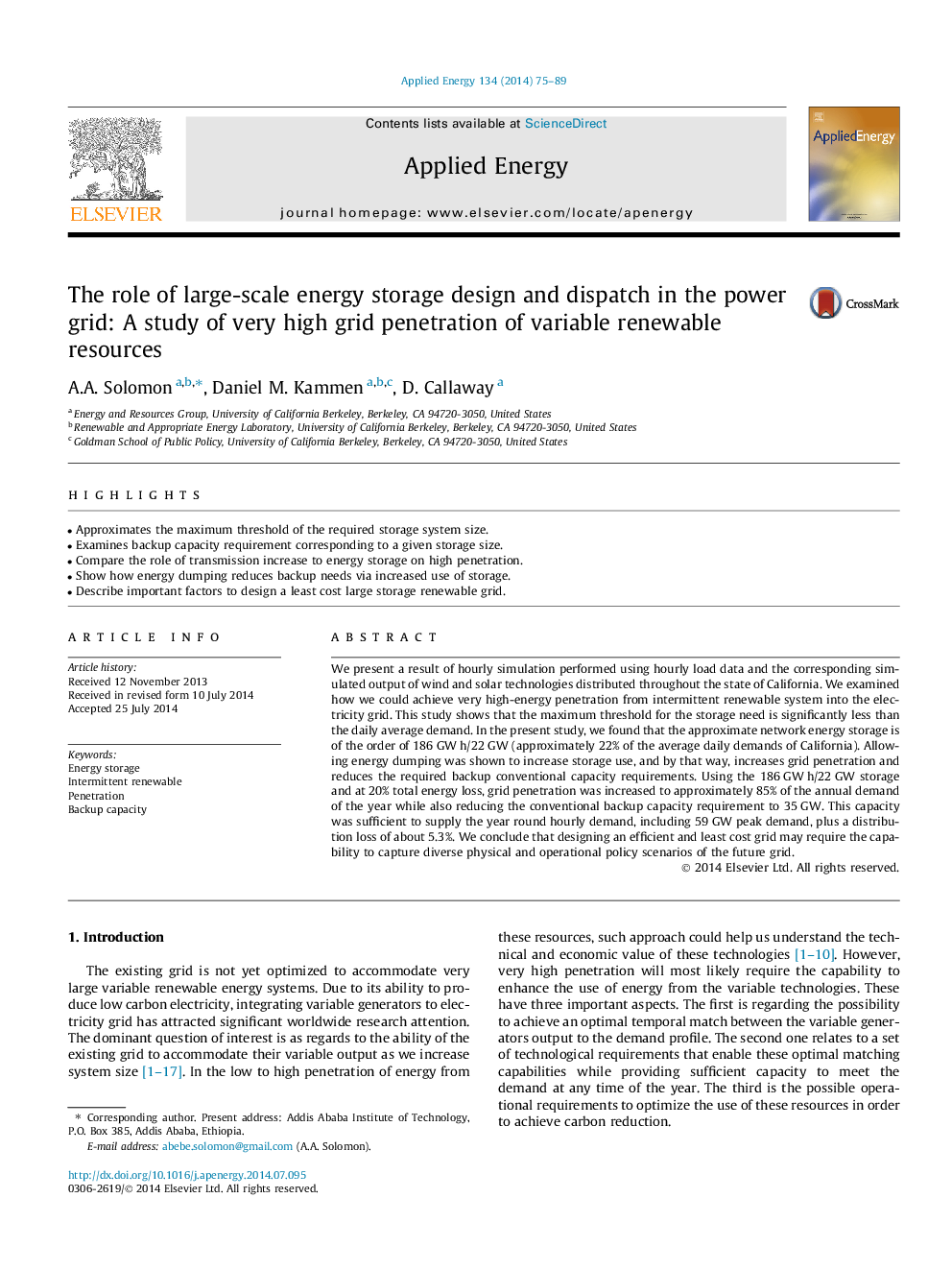| Article ID | Journal | Published Year | Pages | File Type |
|---|---|---|---|---|
| 6689433 | Applied Energy | 2014 | 15 Pages |
Abstract
We present a result of hourly simulation performed using hourly load data and the corresponding simulated output of wind and solar technologies distributed throughout the state of California. We examined how we could achieve very high-energy penetration from intermittent renewable system into the electricity grid. This study shows that the maximum threshold for the storage need is significantly less than the daily average demand. In the present study, we found that the approximate network energy storage is of the order of 186Â GWÂ h/22Â GW (approximately 22% of the average daily demands of California). Allowing energy dumping was shown to increase storage use, and by that way, increases grid penetration and reduces the required backup conventional capacity requirements. Using the 186Â GWÂ h/22Â GW storage and at 20% total energy loss, grid penetration was increased to approximately 85% of the annual demand of the year while also reducing the conventional backup capacity requirement to 35Â GW. This capacity was sufficient to supply the year round hourly demand, including 59 GW peak demand, plus a distribution loss of about 5.3%. We conclude that designing an efficient and least cost grid may require the capability to capture diverse physical and operational policy scenarios of the future grid.
Keywords
Related Topics
Physical Sciences and Engineering
Energy
Energy Engineering and Power Technology
Authors
A.A. Solomon, Daniel M. Kammen, D. Callaway,
